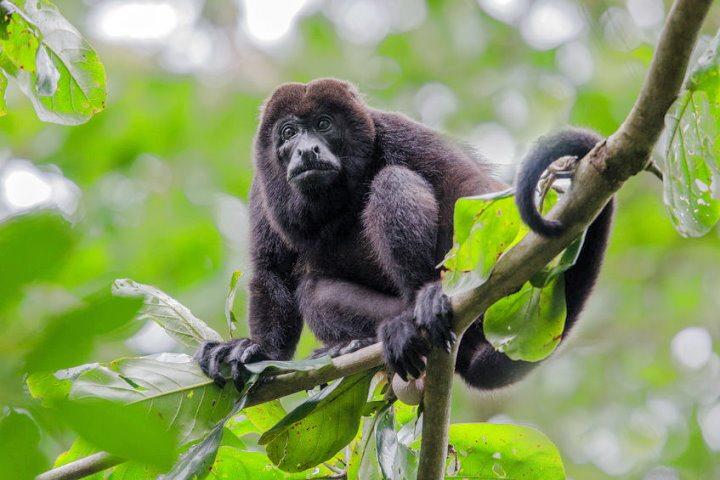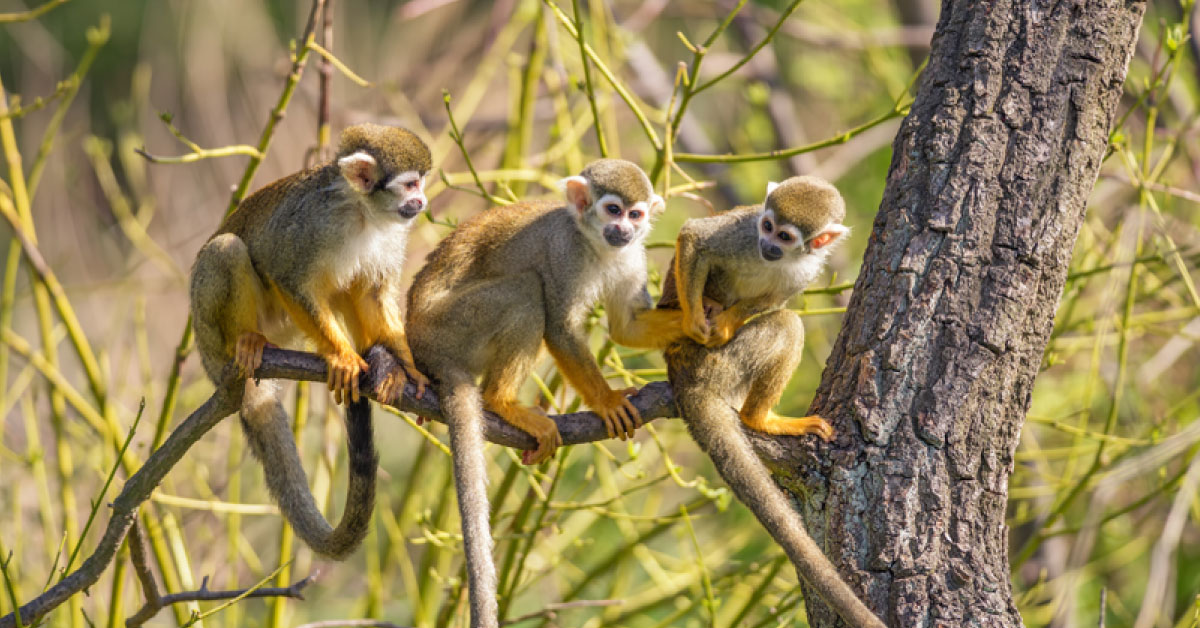Latin America
Related: About this forum'Like nothing seen in nature before': strange dinosaur has scientists enthralled
The highly unusual Ubirajara jubatus boasted a mane of ‘hair-like structions’ and two ‘ribbon-like features’, researchers say
Reuters
Tue 15 Dec 2020 18.35 EST
About 110 million years ago along the shores of an ancient lagoon in what is now north-eastern Brazil, a two-legged, chicken-sized Cretaceous period dinosaur made a living hunting insects and perhaps small vertebrates like frogs and lizards.
On the inside, it was ordinary, with a skeleton similar to many small dinosaurs from the preceding Jurassic Period, scientists said on Tuesday. On the outside, it was anything but.
This dinosaur, called Ubirajara jubatus, possessed a mane of hair-like structures while also boasting two utterly unique, stiff, ribbon-like features probably made of keratin – the same substance that makes up hair and fingernails – protruding from its shoulders.
“There are plenty of other strange dinosaurs, but this one is unlike any of them,” said David Martill, a paleobiology professor at the University of Portsmouth in England, who helped lead the study, published in the journal Cretaceous Research.
More:
https://www.theguardian.com/science/2020/dec/15/dinosaur-hair-feathers-man-ribbon-cretaceous
Also posted in Science:
https://www.democraticunderground.com/122873197
Mike Nelson
(9,955 posts)... I can see the shoulder "hair" looking nice. But, the animal has way too much tail to last long, in my opinion.
![]()
Judi Lynn
(160,527 posts)



It's a startling image, the proportions are so strange.
Response to Judi Lynn (Original post)
CatLady78 This message was self-deleted by its author.
Judi Lynn
(160,527 posts)Have been deeply disgusted and repelled at the "the toxic nature of advertising" for decades, without understanding how they keep doing it. Insulting to every part of humanity!
I know what you mean about having to budget time and attention. Only so much to go around, and one's always regretting it doesn't seem there's nearly enough time in a mere 100 years to really find out what you want to know!
Thank you, Cat Latdy 78.
Response to Judi Lynn (Reply #6)
CatLady78 This message was self-deleted by its author.
niyad
(113,302 posts)Judi Lynn
(160,527 posts)It's good technology is improving by leaps and bounds, allowing us to have exposure to new discoveries continually.
Thanks for reading, niyad, and your comment.
ChazInAz
(2,569 posts)Wonder if those "ribbons" sprouting from its shoulders could be sensory organs, serving the same purpose as a cat's whiskers?
Judi Lynn
(160,527 posts)It just struck me suddenly, after I had been mystified for hours.
I'll bet you've nailed it. Some kind of antennae, just as cat's whiskers tell it when it's better to back away from a tight spot.
Duppers
(28,120 posts)Similar to porcupines' quills?
![]()
CaptainTruth
(6,591 posts)spike jones
(1,678 posts)And Adam said, "This taste just like chicken."
denbot
(9,899 posts)Like a cat’s whiskers, those ribbons could transmit information from objects, or movement from the grass or underbrush close to that individual. If they were hidden in underbrush they could sense from contact with surrounding vegetation and likely pick up size, proximity, and travel direction. A possibility useful feature for a small predator who likely hunts in relatively enclosed spaces.
At least that’s all the hypothesis my two cents could buy..
Judi Lynn
(160,527 posts)Dec 16, 2020 by News Staff
A maned theropod dinosaur with elaborate filamentous structures has been identified by a research team led by University of Portsmouth paleontologists.
The newly-discovered dinosaur species lived about 110 million years ago (Aptian stage of the Cretaceous period) in what is now Brazil.
Named Ubirajara jubatus, the ancient animal was chicken-sized with a mane of long fur down its back.
It also had long, flat, stiff shoulder ribbons of keratin, each with a small sharp ridge running along the middle. Its arms were covered in fur-like filaments down to the hands.
“What is especially unusual about the beast is the presence of two very long, probably stiff ribbons on either side of its shoulders that were probably used for display, for mate attraction, inter-male rivalry or to frighten off foe,” said co-author Professor David Martill, a paleontologist in the School of the Environment, Geography and Geosciences at the University of Portsmouth.
“We cannot prove that the specimen is a male, but given the disparity between male and female birds, it appears likely the specimen was a male, and young, too, which is surprising given most complex display abilities are reserved for mature adult males.”
“Given its flamboyance, we can imagine that the dinosaur may have indulged in elaborate dancing to show off its display structures.”
Ubirajara jubatus’ mane is thought to have been controlled by muscles allowing it to be raised, in a similar way a dog raises its hackles or a porcupine raises its spines when threatened.
More:
http://www.sci-news.com/paleontology/ubirajara-jubatus-09158.html